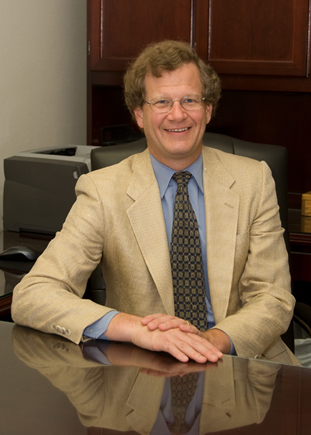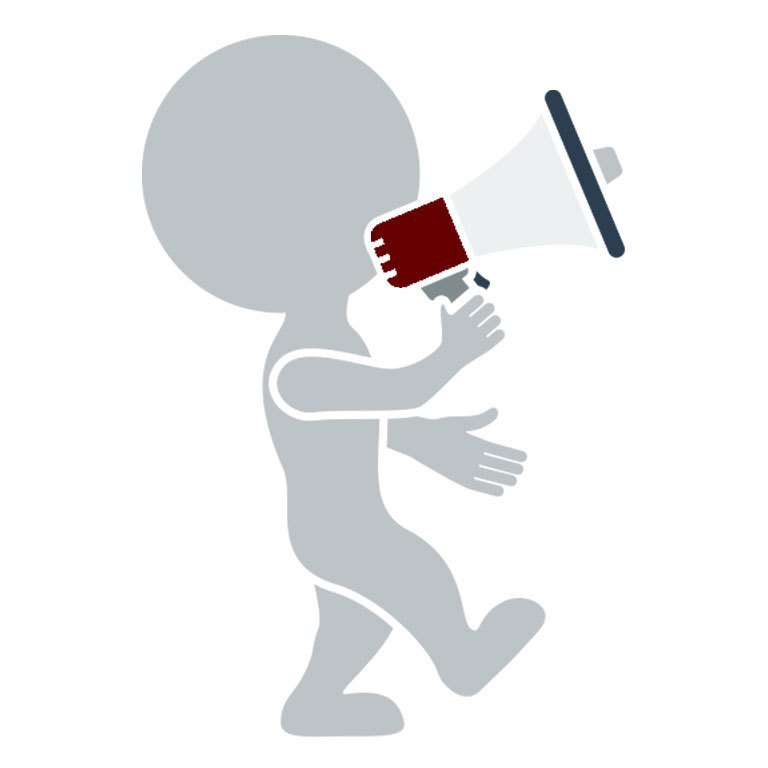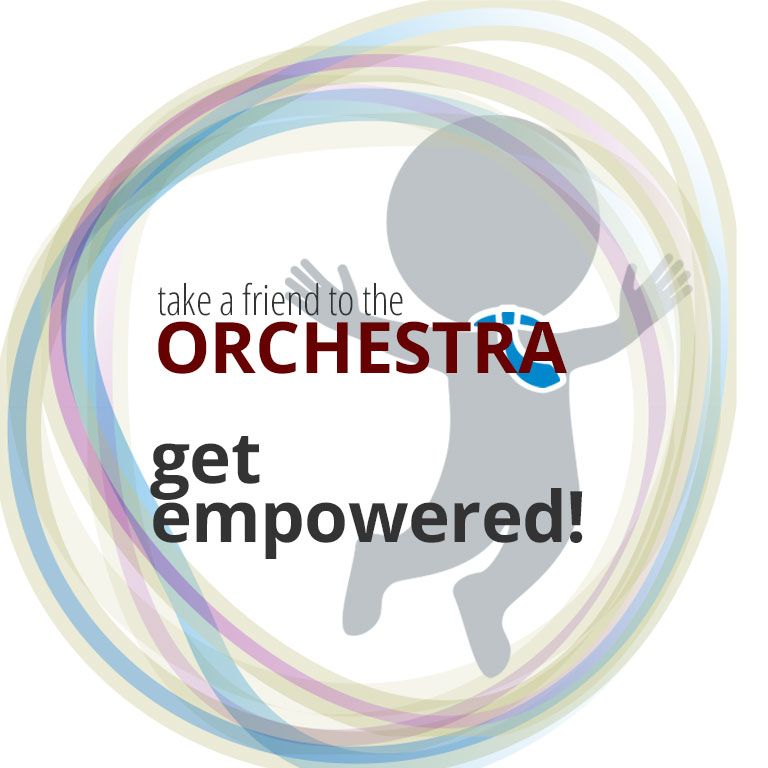Curt Long is a perfect example of the sort of fantastic orchestra executives you don’t hear enough about. After a long and successful tenure as Dayton Philharmonic’s executive director, he recently assumed the same duties with the Alabama Symphony. Curt’s Take A Friend To Orchestra (TAFTO) contribution focuses on how orchestras need to get outside of what he defines as the “comfortable, insulated insiders’ view of what audiences want” and work toward creating an environment that attracts and retains new listeners…
Take a Friend to the Orchestra
By: Curt Long
In the orchestra world we far too often assume that we know what audiences want.
I think that there are two big fallacies in this thinking:
- that there is some kind of monolithic audience with a describable “desired concert experience”, and
- that we, in a brilliantly insightful way, understand what this “desired concert experience” is.
In my observation, what we think this is typically turns out to be is an odd combination of
- exactly what we want to hear (or play or conduct as the case may be), and
- a steady parade of what we cynically consign to the “tired old warhorses” junk pile.

To me, “Take a Friend to Orchestra Month” is all about taking off the blinders, getting outside of our comfortable, insulated insiders’ view of what audiences want, and taking a new look at the concert experience. And, most importantly, it’s about getting people with truly fresh eyes and ears into the concert hall and then finding out what they really think about what happens.
In recent years multiple national audience motivation studies (most prominently the League’s 2001 Audience Motivation Study and the Knight Foundation’s 2002 Classical Music Consumer Segmentation Study) have given us plenty of food for thought about what it is that brings people to concerts and what aspects of the concert experience determine whether they enjoy themselves when they get there. Not surprisingly, the research says that different people are looking for different things and that different people are going to participate in the orchestra audience in different ways. But often it seems that we haven’t really embraced this view of reality.
Our business model still relies on the assumption that, if we can just get someone in the door for the first time, they will begin the slow but inexorable climb up the ladder from single ticket buyer to subscriber to small donor to large donor to million dollar planned giving prospect. It is very clear that this isn’t generally the way the world works (the extremely occasional “I attended a concert last night for the first time and it changed my life” letter only goes to prove how rare this occurrence is).
I would suggest that we need a paradigm shift in how we think about our audiences.
In the old world, a relatively small number of people came to orchestra concerts, but they more or less came to every concert. In the new world, a lot more people attend orchestra concerts, but on average they come a lot less often. Indeed, contrary to the general sense that orchestra audiences are in decline, my personal observation at the orchestras with which I have been affiliated is that we are reaching more individuals than ever before, but with much lower frequency (in many cases, people who come to a single concert and never return).
I probably don’t need to go into the obvious ways in which this change is a scary one. But in a profoundly important way it can also be a liberating one. Rather than having to make one group of people reasonably happy all the time (which too often can lead to what I think of as the “lowest common denominator approach” to programming), let’s recognize that different people are looking for different things, give them all what they want some of the time, and communicate clearly what we are offering (no more “tricking people into coming to concerts with catchy titles,” please).
I’m not suggesting that we abandon subscriptions. Doing an excellent job of selling season packages to those who will buy should still be job one for any orchestra marketing department. But let’s recognize that there are lots of people out there who are never going to sign up for a 10 or 15 or 20 week survey or symphonic repertoire. Let’s stop wasting money and time and energy trying to get them to buy something that they’re not going to buy. A big part of audience development success for orchestras needs to come at the low and mid range of participation rates: getting occasional and very occasional attendees to come more often.
So what, you ask, does any of this have to do with Take a Friend to Orchestra month?
It suggests that success in large part will come from having some insight into both the prospective concert experience and the prospective friend, and matching them appropriately. We need to recognize that any concert has the potential to work on different levels for different people. We need to avoid promising what we can’t deliver, and we need to systems in place to get ongoing feedback about whether we met our audience members’ expectations.
For most of us insiders, and for some potential first time attendees, the concert really is all about the repertoire. But it seems trivially obvious to state that, within this group, what people are looking for is all over the map. Some people can’t get enough choral music, and think we should program it early and often. Some look for relaxation, others for growth. Some people thrive on the “tasting menu” concert, others want to bury themselves in a single experience. For some people, what they hear is much less important that what happens before and after.
For others it’s about other things (one of my volunteers doesn’t beat around the bush on this one: taking your wife to the orchestra, he promises, will lead to enhanced marital bliss?—and who couldn’t use a bit more of that!).
The Alabama Symphony Orchestra is designating our April 16 “Symphony 7” concert as our official Take a Friend to Orchestra program.
Symphony 7 is our “edgy” series, and this concert is the edgiest one of the season:
| Michael Daugherty | Route 66 |
| Frank Zappa | Dog Breath Variations Uncle Meat |
| Philip Ratliff | Travolta |
| Michael Daugherty | “Red Cape Tango” from Metropolis Symphony |
| Philip Glass | “Neuköln” from Heroes Symphony |
| Michael Daugherty | Gee’s Bend for Orchestra and Electric Guitar (World Premiere) |
I’ll be sending a letter to everyone who has a ticket for this program, telling them about Take a Friend to Orchestra Month and asking them each to bring someone who has never been to an ASO concert before (at a discount off of what is already a very affordable ticket price). After the concert we’ll invite first time attendees to participate in a talk back session. I’ll provide a postscript after the concert to let you know what they have to say.
Postscript: As promised, I’m back to give a report on our April 16 TAFTO concert.
Artistically, the concert was a success. Every piece on the program seemed to work well for at least some of the people in the concert, with Michael Daugherty’s Red Cape Tango and the new work Gee’s Bend getting perhaps the warmest response. For a concert of all new music, I had not a single irate complaint—no more than a few grumbling “I like music with melody” comments.
Here is Mike Huebner’s review:
We sold 343 single tickets, making our revenue goal. The “½ off bring a friend” offer didn’t generate much response, but we did end up with 47 “new to file” households, which suggests that about a quarter of single ticket buyers were attending the ASO for the first time.
Our talk back session after the concert was a bit of a flop. We had four people stick around to talk to us, only one of whom was truly a newbie, and he had to leave after a few minutes to catch his bus home. The others all wanted to talk about Philip Glass and Frank Zappa.
We did get some interesting feedback from a local blogger.
~Curt Long
More Contributor Goodies


